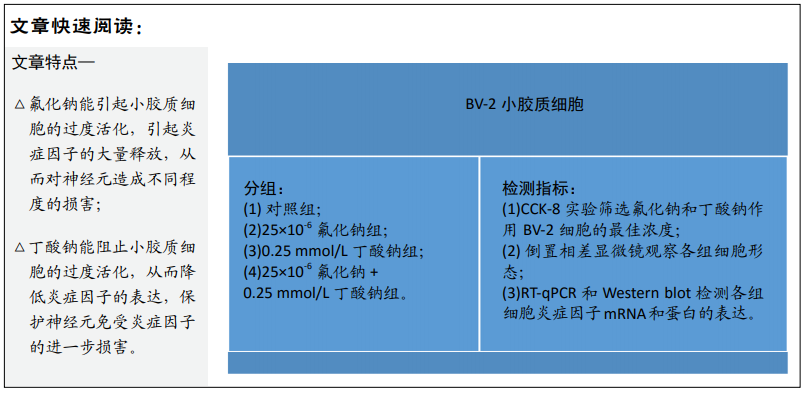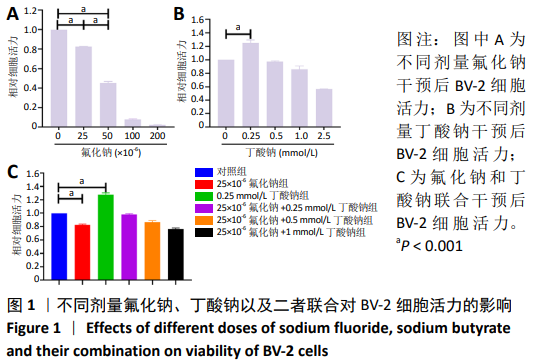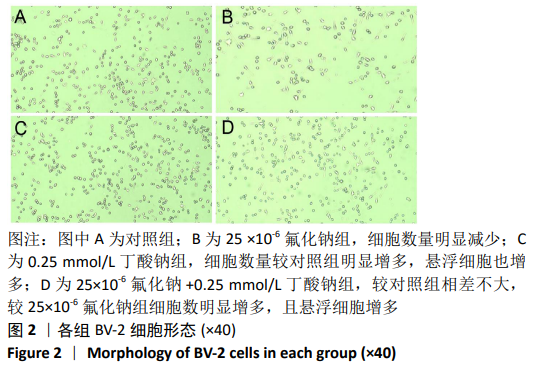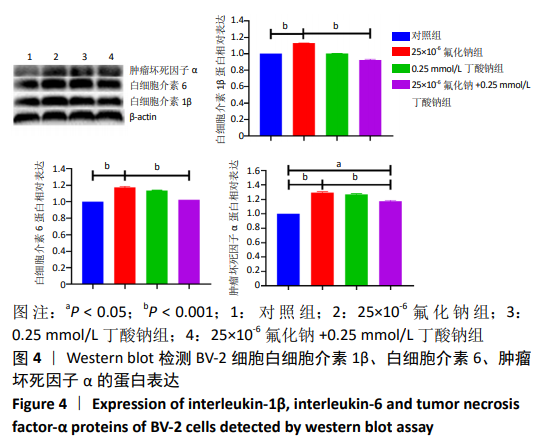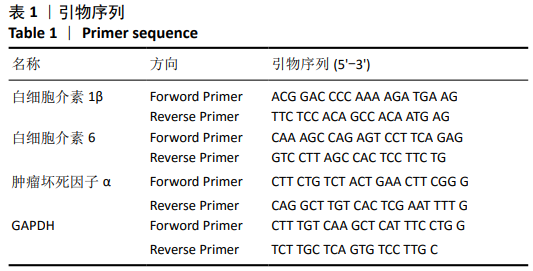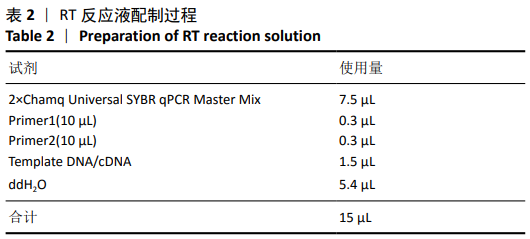[1] QUADRI JA, ALAM MM, SARWAR S, et al. Multiple Myeloma-Like Spinal MRI Findings in Skeletal Fluorosis: An Unusual Presentation of Fluoride Toxicity in Human. Front Oncol. 2016;6:245.
[2] 孙殿军,沈雁峰,赵新华,等.中国大陆地方性氟中毒病情动态与现状分析[J].中国地方病学杂志, 2001, 20(6): 429-433.
[3] 赵丽军,孙玉富,于光前,等.评价地方性氟中毒防控效果的唯一标准——地方性氟中毒病区控制标准(GB17017-2010)解读[J].中国卫生标准管理, 2011, 2(2): 37-40.
[4] 颜南. 氟通过激活MAPK和NF-κB信号通路促进小胶质细胞炎性因子分泌的研究[D].沈阳:中国医科大学,2018.
[5] 刘艳洁,高勤,龙义国,等.慢性氟中毒对大鼠脑组织Phospho-Elk-1表达的影响[J].贵阳医学院学报, 2011, 30(3): 251-255.
[6] 孙增荣,刘风贞,杨海贤,等.饮高氟水小鼠脑海马回组织超微结构观察[J].中国地方病学杂志, 2000, 19(5):333-334.
[7] CHOI AL, SUN G, ZHANG Y, et al. Developmental fluoride neurotoxicity: a systematic review and meta-analysis. Environ Health Perspect. 2012; 120(10):1362-1368.
[8] GRANDJEAN P. Developmental fluoride neurotoxicity: an updated review. Environ Health. 2019;18(1):110.
[9] SABOUR S, GHORBANI Z. Developmental fluoride neurotoxicity: clinical importance versus statistical significance. Environ Health Perspect. 2013;121(3):A70.
[10] CHEN J, NIU Q, XIA T, et al. ERK1/2-mediated disruption of BDNF-TrkB signaling causes synaptic impairment contributing to fluoride-induced developmental neurotoxicity. Toxicology. 2018;410:222-230.
[11] SÄEMANN MD, BÖHMIG GA, OSTERREICHER CH, et al. Anti-inflammatory effects of sodium butyrate on human monocytes: potent inhibition of IL-12 and up-regulation of IL-10 production. FASEB J. 2000; 14(15):2380-2382.
[12] QIU Z, LU P, WANG K, et al. Dexmedetomidine Inhibits Neuroinflammation by Altering Microglial M1/M2 Polarization Through MAPK/ERK Pathway. Neurochem Res. 2020;45(2):345-353.
[13] LIU B, HUANG B, HU G, et al. Corrigendum: Isovitexin-Mediated Regulation of Microglial Polarization in Lipopolysaccharide-Induced Neuroinflammation via Activation of the CaMKKβ/AMPK-PGC-1α Signaling Axis. Front Immunol. 2020;11:41.
[14] AL MAMUN A, CHAUHAN A, QI S, et al. Microglial IRF5-IRF4 regulatory axis regulates neuroinflammation after cerebral ischemia and impacts stroke outcomes. Proc Natl Acad Sci U S A. 2020;117(3):1742-1752.
[15] GAO G, LI C, ZHU J, et al. Glutaminase 1 Regulates Neuroinflammation After Cerebral Ischemia Through Enhancing Microglial Activation and Pro-Inflammatory Exosome Release. Front Immunol. 2020;11:161.
[16] SERHAN A, AERTS JL, BODDEKE EWGM, et al. Neuroprotection by Insulin-like Growth Factor-1 in Rats with Ischemic Stroke is Associated with Microglial Changes and a Reduction in Neuroinflammation. Neuroscience. 2020;426:101-114.
[17] KATO T, TAKAHASHI M, FUKUDA NN, et al. Commensal microbe-derived butyrate induces the differentiation of colonic regulatory T cells. Nature. 2013;504(7480):446-450.
[18] JAWORSKA J, ZIEMKA-NALECZ M, SYPECKA J, et al. The potential neuroprotective role of a histone deacetylase inhibitor, sodium butyrate, after neonatal hypoxia-ischemia. J Neuroinflammation. 2017; 14(1):34.
[19] HU X, ZHANG K, XU C, et al. Anti-inflammatory effect of sodium butyrate preconditioning during myocardial ischemia/reperfusion. Exp Ther Med. 2014;8(1):229-232.
[20] PATNALA R, ARUMUGAM TV, GUPTA N, et al. HDAC Inhibitor Sodium Butyrate-Mediated Epigenetic Regulation Enhances Neuroprotective Function of Microglia During Ischemic Stroke. Mol Neurobiol. 2017; 54(8):6391-6411.
[21] KIM JA, KIM SH, KIM IS, et al. Anti-Inflammatory Effects of a Mixture of Lactic Acid Bacteria and Sodium Butyrate in Atopic Dermatitis Murine Model. J Med Food. 2018;21(7):716-725.
[22] ROY AC, CHANG G, MA N, et al. Sodium butyrate suppresses NOD1-mediated inflammatory molecules expressed in bovine hepatocytes during iE-DAP and LPS treatment. J Cell Physiol. 2019;234(11): 19602-19620.
[23] WANG CC, WU H, LIN FH, et al. Sodium butyrate enhances intestinal integrity, inhibits mast cell activation, inflammatory mediator production and JNK signaling pathway in weaned pigs. Innate Immun. 2018;24(1):40-46.
[24] SILVA LG, FERGUSON BS, AVILA AS, et al. Sodium propionate and sodium butyrate effects on histone deacetylase (HDAC) activity, histone acetylation, and inflammatory gene expression in bovine mammary epithelial cells. J Anim Sci. 2018;96(12):5244-5252.
[25] GUO J, WANG Y, JIANG P, et al. Sodium butyrate alleviates lipopolysaccharide-induced endometritis in mice through inhibiting inflammatory response. Microb Pathog. 2019;137:103792.
[26] LI Y, SHEN R, WEN G, et al. Effects of Ketamine on Levels of Inflammatory Cytokines IL-6, IL-1β, and TNF-α in the Hippocampus of Mice Following Acute or Chronic Administration. Front Pharmacol. 2017;8:139.
[27] NAKANISHI H. Microglial cathepsin B as a key driver of inflammatory brain diseases and brain aging. Neural Regen Res. 2020;15(1):25-29.
[28] YAN N, LIU Y, LIU S, et al. Fluoride-Induced Neuron Apoptosis and Expressions of Inflammatory Factors by Activating Microglia in Rat Brain. Mol Neurobiol. 2016;53(7):4449-4460.
[29] VALVASSORI SS, DAL-PONT GC, STECKERT AV, et al. Sodium butyrate has an antimanic effect and protects the brain against oxidative stress in an animal model of mania induced by ouabain. Psychiatry Res. 2016; 235:154-159.
[30] LEE HJ, SON Y, LEE M, et al. Sodium butyrate prevents radiation-induced cognitive impairment by restoring pCREB/BDNF expression. Neural Regen Res. 2019;14(9):1530-1535.
[31] LI H, SUN J, WANG F, et al. Sodium butyrate exerts neuroprotective effects by restoring the blood-brain barrier in traumatic brain injury mice. Brain Res. 2016;1642:70-78.
[32] GUBERN C, CAMÓS S, HURTADO O, et al. Characterization of Gcf2/Lrrfip1 in experimental cerebral ischemia and its role as a modulator of Akt, mTOR and β-catenin signaling pathways. Neuroscience. 2014; 268:48-65.
[33] VAL-LAILLET D, GUÉRIN S, COQUERY N, et al. Oral sodium butyrate impacts brain metabolism and hippocampal neurogenesis, with limited effects on gut anatomy and function in pigs. FASEB J. 2018;32(4): 2160-2171.
[34] SANTA-CECÍLIA FV, SOCIAS B, OUIDJA MO, et al. Doxycycline Suppresses Microglial Activation by Inhibiting the p38 MAPK and NF-kB Signaling Pathways. Neurotox Res. 2016;29(4):447-459.
[35] OH WJ, JUNG U, EOM HS, et al. Inhibition of lipopolysaccharide-induced proinflammatory responses by Buddleja officinalis extract in BV-2 microglial cells via negative regulation of NF-kB and ERK1/2 signaling. Molecules. 2013;18(8):9195-9206.
[36] HAN MH, LEE WS, NAGAPPAN A, et al. Flavonoids Isolated from Flowers of Lonicera japonica Thunb. Inhibit Inflammatory Responses in BV2 Microglial Cells by Suppressing TNF-α and IL-β Through PI3K/Akt/NF-kb Signaling Pathways. Phytother Res. 2016;30(11):1824-1832.
[37] CHEN R, ZHAO LD, LIU H, et al. Fluoride Induces Neuroinflammation and Alters Wnt Signaling Pathway in BV2 Microglial Cells. Inflammation. 2017;40(4):1123-1130.
[38] FERNANDO WMADB, MARTINS IJ, MORICI M, et al. Sodium Butyrate Reduces Brain Amyloid-β Levels and Improves Cognitive Memory Performance in an Alzheimer’s Disease Transgenic Mouse Model at an Early Disease Stage. J Alzheimers Dis. 2020;74(1):91-99.
[39] KINAWY AA. Synergistic oxidative impact of aluminum chloride and sodium fluoride exposure during early stages of brain development in the rat. Environ Sci Pollut Res Int. 2019;26(11):10951-10960.
[40] 高博. NLRP1炎症小体在慢性应激诱导的小鼠抑郁样行为中的作用[D].合肥:安徽医科大学, 2018.
[41] CHEN G, RAN X, LI B, et al. Sodium Butyrate Inhibits Inflammation and Maintains Epithelium Barrier Integrity in a TNBS-induced Inflammatory Bowel Disease Mice Model. EBioMedicine. 2018;30:317-325.
|
